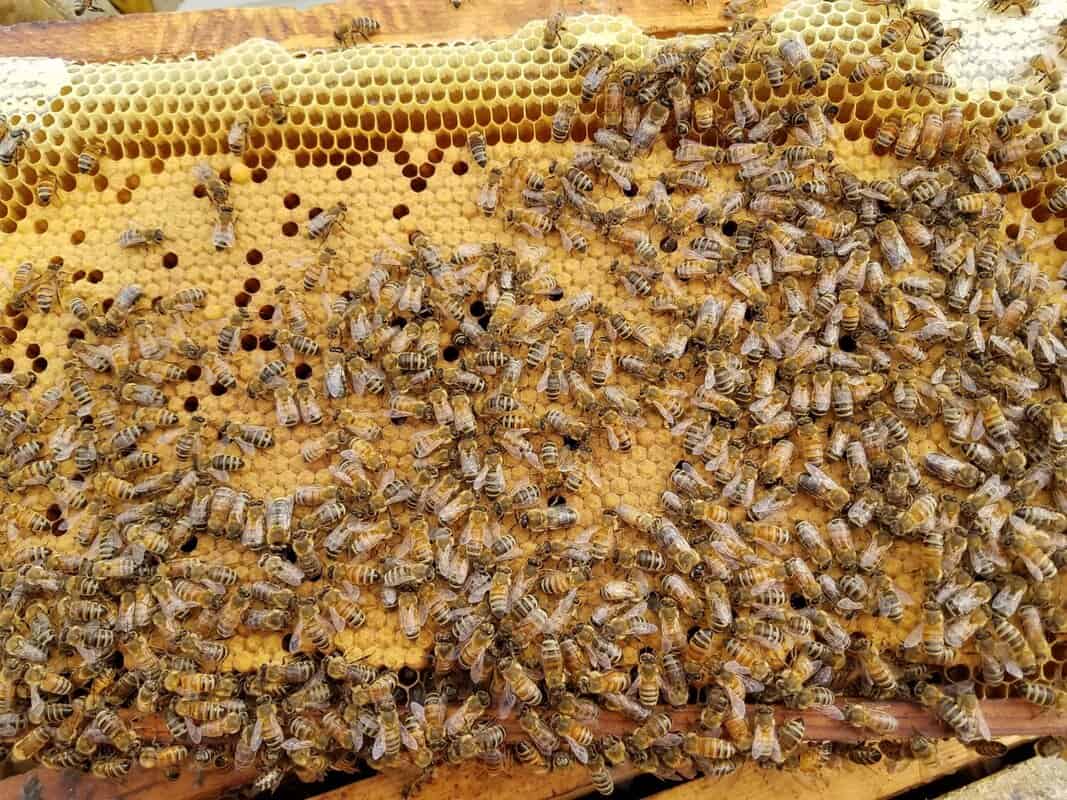Are you interested in becoming a beekeeper? Introducing the new queen bee is the first step in setting up a successful hive. In this article, we will discuss how to select and introduce a new queen bee to your hive and the rewards of keeping bees. You will learn the importance of a healthy queen bee in the hive and how to ensure her survival. We will also look at the benefits of beekeeping and the joys of harvesting your own honey. So, if you’re ready to bring a new queen bee into your hive, read on to learn how!
Benefits of Keeping a Queen Honey Bee
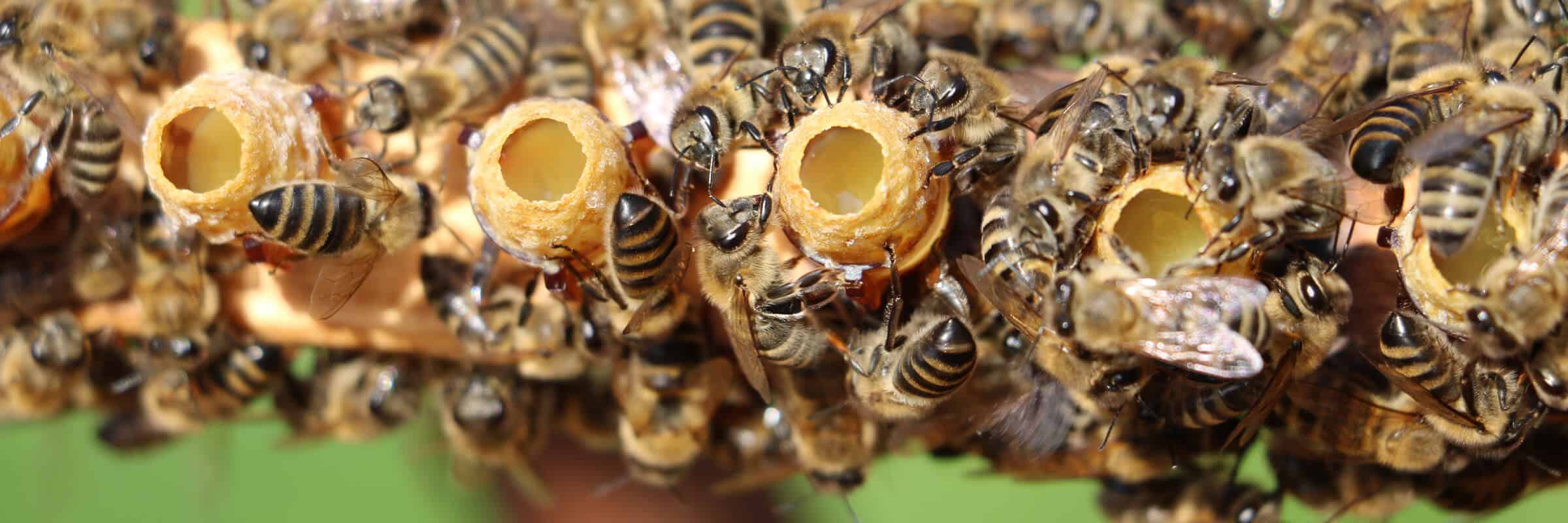
Improved Honey Production
A new queen bee encourages increased honey production by providing a stronger, healthier colony with more foragers that spend their time gathering nectar and pollen. The result is more honey for the beekeeper.
Increased Pollination
Bees are essential to pollination, and having a strong colony with a new queen bee will produce more pollinators to help spread pollen and help with the production of fruits and vegetables.
Increased Disease Resistance
A new queen bee is not only a benefit to honey production, but also to the overall health of the colony. A new queen bee will boost the colony’s ability to fight off diseases and parasites, which in turn will result in healthier and more resilient bees.
What is a New Queen Bee?
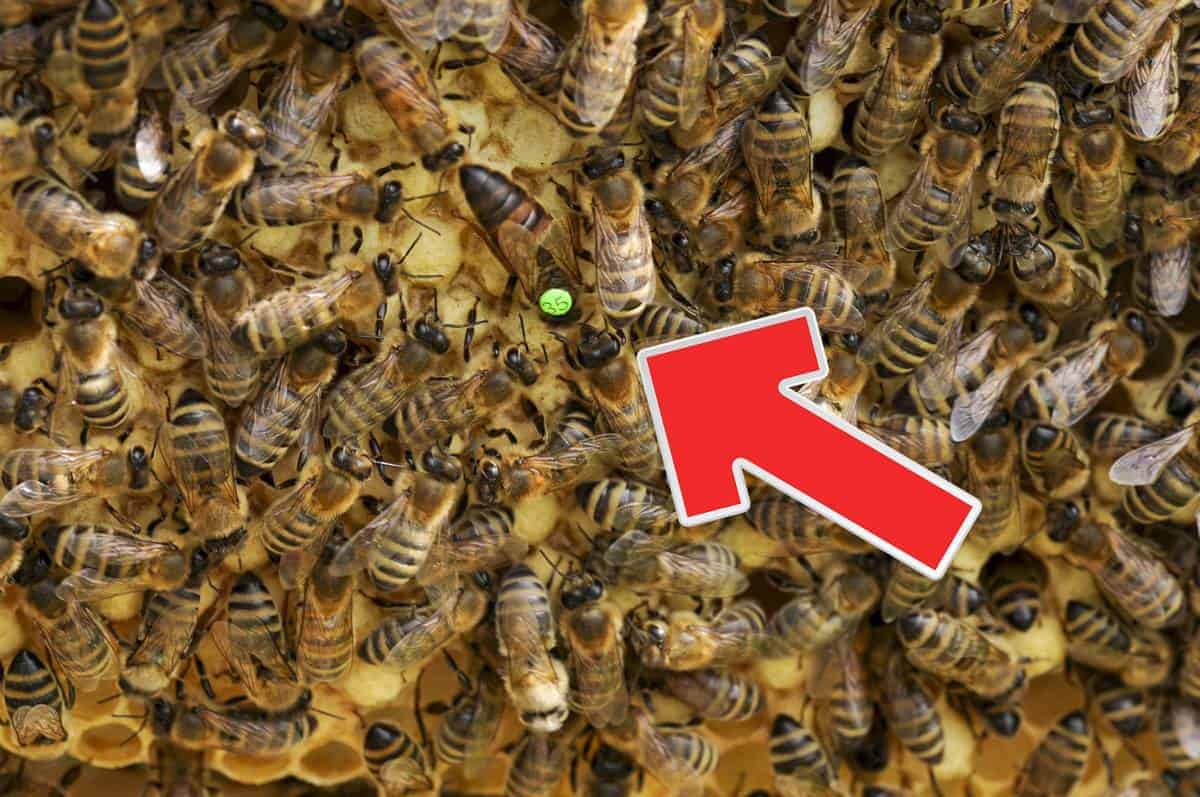
A new queen bee is a female honey bee that is placed in a beehive to become the new queen of the colony. The new queen bee is chosen based on her size, health, and fertility. She is responsible for producing new workers in the hive and maintaining the balance between the different bee castes.
The new queen bee has several distinct roles in the hive which include the following:
- Oviposition: The new queen bee is responsible for laying eggs. She is the only bee in the hive capable of laying fertilized eggs which will become new workers. Her eggs are laid in special cells called queen cells.
- Pheromone Production: The new queen bee produces pheromones which are used to regulate the activities of the other bees in the hive. These pheromones serve as a communication system and can be used to signal danger, or to encourage worker bees to forage for food.
- Mating: The new queen bee must mate with drones in order to produce new workers. She will mate with multiple drones in her lifetime, ensuring genetic diversity in the hive.
A new queen bee is essential for a healthy and productive beehive. It is important to properly introduce a new queen bee into the hive in order to ensure that she is accepted by the existing workers. If the new queen is not accepted, the existing workers may attempt to kill her.
The Process of Introducing a New Queen Bee
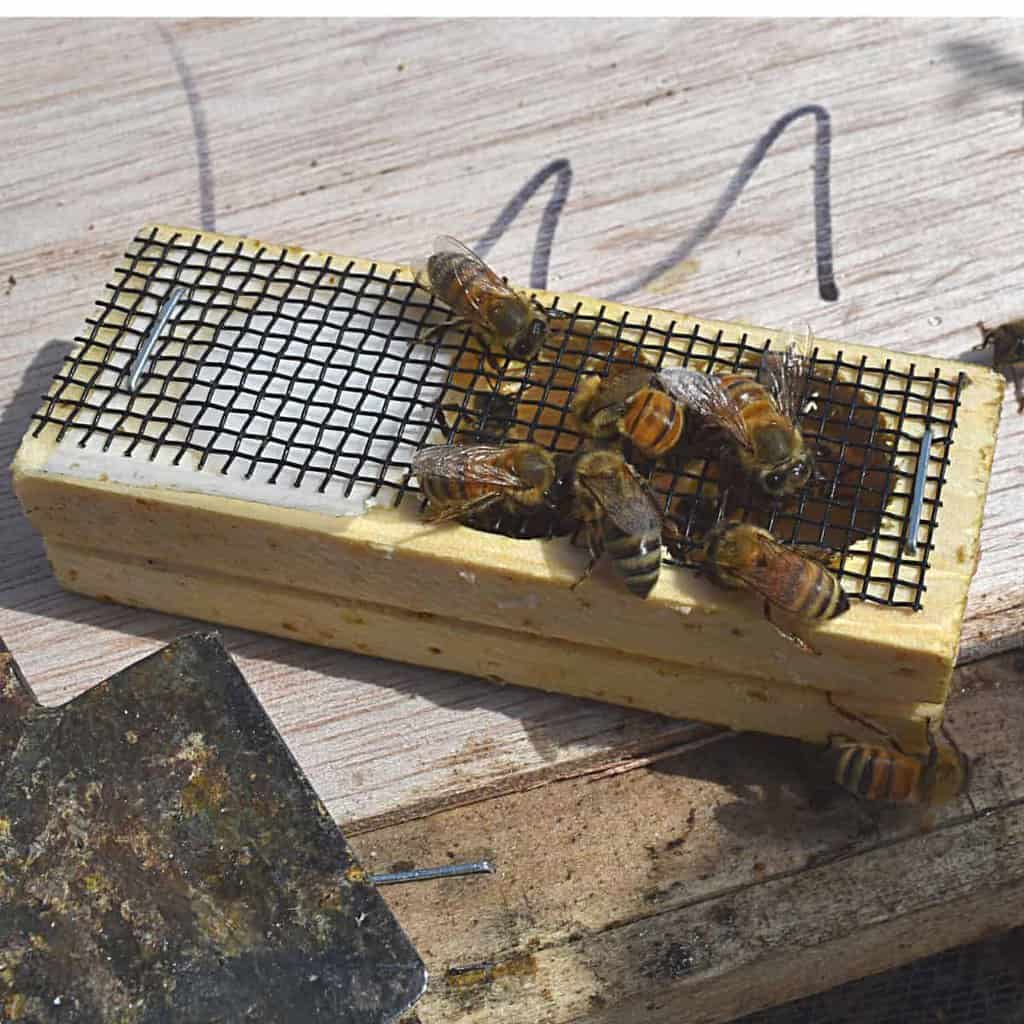
Step 1: Introduce the Queen
Once the new queen bee has been identified, the beekeeper needs to introduce her to the hive. She should be placed in the center of the frames, surrounded by worker bees. To prevent the worker bees from attacking her, the beekeeper should coat her in a sugar syrup. The sugar syrup will attract the worker bees and help them become accustomed to her presence.
Step 2: Allowing the Queen to Establish Herself
Once the queen bee has been introduced to the hive, the beekeeper needs to allow her to establish herself. This process can take up to several weeks. During this time, the beekeeper should monitor the hive and make sure the queen is not being attacked by the worker bees. If the queen does become threatened, the beekeeper should intervene and make sure she is safe.
Step 3: Monitor the Queen’s Progress
Once the queen has established herself in the hive, the beekeeper should monitor her progress. This includes checking for eggs laid by the queen and observing the behavior of the worker bees. If the queen is laying eggs and the worker bees are behaving normally, then the queen has been successfully introduced. If not, the beekeeper should investigate further to determine the cause of the problem.
Challenges of Keeping a New Queen Bee
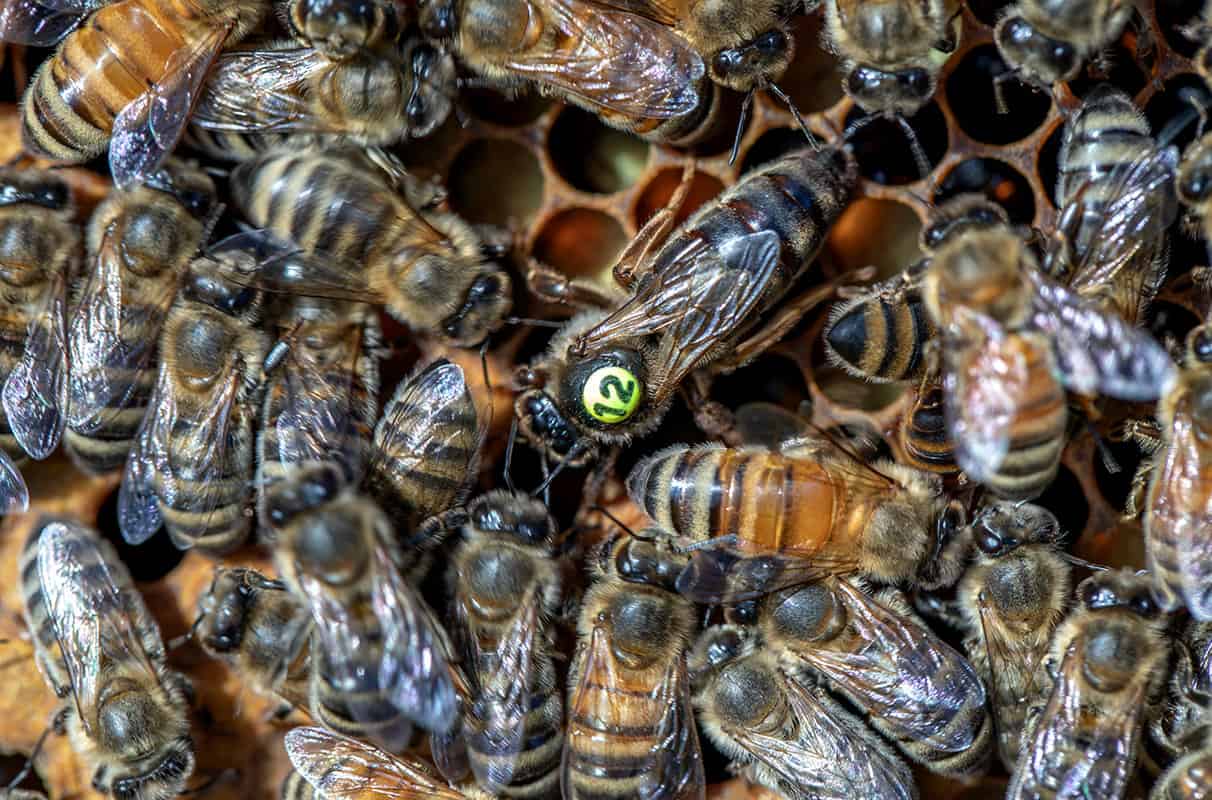
- Identification: The queen bee needs to be identified and marked for tracking purposes. It is also important to identify the queen bee in order to avoid any possible infestations or disease outbreaks.
- Initialization: Establishing a new queen bee in a hive can be a difficult process. It is important to ensure that the hive is properly prepared and the queen bee is properly accepted before introducing her.
- Feeding: The queen bee needs to be fed in order to remain healthy and productive. The beekeeper needs to provide the queen bee with a nutrient-rich diet that includes proteins, carbohydrates, and vitamins.
- Mating: The queen bee needs to mate in order to continue to produce eggs and maintain the hive’s population. The beekeeper needs to ensure that the queen bee is able to find a suitable mate and that the mating process is successful.
- Protection: The queen bee needs to be protected from predators and disease. The beekeeper needs to ensure that the hive is well-maintained and that the queen bee is able to stay safe from harm.
Tips on Keeping a New Queen Bee
Provide Adequate Nutrition
Providing your queen bee with a balanced diet is the key to a healthy and successful colony. Bees need a variety of proteins and carbohydrates to remain in optimal health, and the queen bee is no exception. Feed your queen bee a mixture of honey, pollen, and royal jelly to ensure she receives all the nutrients she needs. In addition, make sure she has access to fresh water.
Monitor the Queen’s Progress
Observe the queen bee regularly to ensure she is healthy and laying eggs. Place a queen excluder over the hive to prevent her from leaving and note any changes in her behavior. If the queen appears to be ill or weak, it is important to intervene quickly and take the necessary steps to ensure her health.
Maintain the Hive’s Health
Keeping the hive clean and free of pests is essential for the health of the queen bee and her colony. Regularly inspect the hive for signs of infestation and take prompt action if any are found. Furthermore, ensure the hive is well ventilated and the temperature is kept at a consistent level to keep the bees comfortable.
Frequently Asked Questions
What is the First Step in Keeping a Queen Bee?
The first step in keeping a queen bee is to acquire an established colony. This is typically done through a beekeeper who has a surplus of colonies available for purchase. When purchasing a colony, it is important to ensure that the colony is healthy and strong, with a well-developed queen bee. Once the colony has been established, the beekeeper should monitor the hive closely to ensure the queen bee is healthy and producing offspring. Additionally, the beekeeper should provide the colony with a variety of nectar sources and food stores to ensure the queen bee and her workers have ample resources to produce honey and maintain the health of the hive.
What is the Best Way to Ensure the Queen Bee is Healthy and Thriving?
- Provide adequate nutrition: A queen bee needs a healthy diet of pollen and nectar to stay healthy and productive. Make sure to provide a steady supply of both. Additionally, supplement the diet with bee-friendly plants, such as bee balm, to provide additional nutrients.
- Monitor the hive: Regularly inspect the hive to ensure the queen bee is healthy and her workers are productive. Look for signs of disease or infestation, and take action if needed.
- Maintain a clean environment: Make sure the hive is kept clean and the queen bee is free from pests. Remove dead bees and other debris from the hive on a regular basis.
- Provide ample space: The queen bee needs plenty of space to lay her eggs and ensure the hive is productive. Make sure the hive is large enough to accommodate the queen and her workers.
- Inspect the queen bee: Regularly inspect the queen bee to make sure she is healthy. Look for signs of disease or infestation, and take action if needed.
What Benefits Can Beekeeping Provide?
- Harvest Honey and Beeswax: Beekeepers can collect the honey and beeswax from the hive to use for personal consumption or to sell. Honey is a natural, sweetener that is not only tasty but also has many health benefits. Beeswax is used for various purposes such as making candles, cosmetics, and skin care products.
- Pollination: As bees fly from plant to plant, they help with the pollination process. This is beneficial for farmers and other agricultural operations, as it helps to improve crop yield and overall quality.
- Educational: Beekeeping is a great way to learn about the natural world and the wonders of nature. It provides hands-on experience and teaches important lessons about the importance of preserving the environment.
- Natural Pest Control: Bees are natural predators of many pests, and they can help to keep the population of harmful insects down. This can be beneficial for gardens and crops.
- Hobby: Beekeeping is a fun and rewarding hobby that can be enjoyed by people of all ages. It also provides a great opportunity to get outdoors, enjoy the fresh air, and connect with nature.
What are the risks associated with beekeeping?
Beekeeping is a rewarding hobby, however, it does come with some inherent risks that you must be aware of before you begin. Here are some of the most common risks associated with beekeeping:
- Stings: Bee stings are a common hazard of beekeeping and can cause pain and swelling. Protective clothing is recommended when managing hives, but even with protective gear, some stings may still occur.
- Allergic reactions: People who are allergic to bee stings should not attempt beekeeping. An allergic reaction to bee stings can be life-threatening and thus, it is important to take all necessary precautions to avoid being stung.
- Diseases: Bees can carry a variety of diseases which can be spread to other hives and to humans. It is important to practice good hygiene when handling bee equipment and to monitor your hives for signs of disease.
- Pest infestations: Bees can be susceptible to a variety of pests such as mites and wax moth. It is important to monitor your hives for any signs of infestation and to take steps to control them if necessary.
- Weather: Extreme weather can cause damage to hives, reduce honey production and even kill bees. It is important to monitor the weather and take steps to protect your hives if necessary.
Beekeeping can be a rewarding and enjoyable hobby, but it is important to be aware of the risks associated with it. Taking the necessary precautions can help to ensure that you have a successful and safe beekeeping experience.
What Advice Would You Give to a Beginner Beekeeper?
Research: Spend time researching on beekeeping and the type of bees you plan to keep, as this will help you understand bee behavior, beekeeping techniques and beekeeping equipment.
Start Small: Start with a small hive and colony, as this will give you the chance to get familiar with beekeeping and the beekeeping process.
Find a Mentor: Seek out a local beekeeper or beekeeping organization for guidance and support.
Safety First: Always wear protective gear when handling bees and their hives.
Check Local Regulations: Check local laws and regulations to ensure that you are in compliance with local requirements.
Join a Bee Club: Joining a bee club or beekeeping association is a great way to stay up-to-date on beekeeping trends and to network with other beekeepers.
Conclusion
Beekeeping is a rewarding and fulfilling hobby. It requires patience, knowledge, and dedication, but the rewards of having a healthy, thriving hive far outweigh the effort put in. By following the steps outlined in this article, you can learn how to introduce a new queen bee and enjoy the rewards of successful beekeeping.
